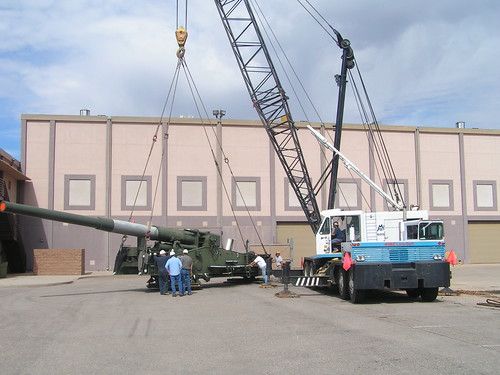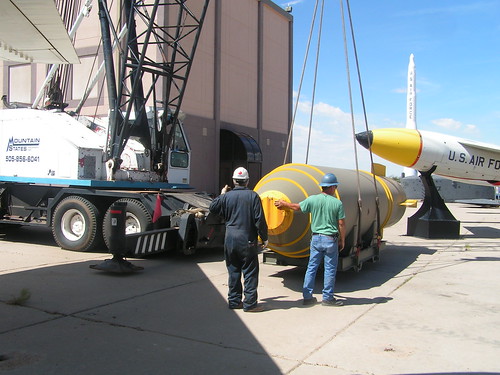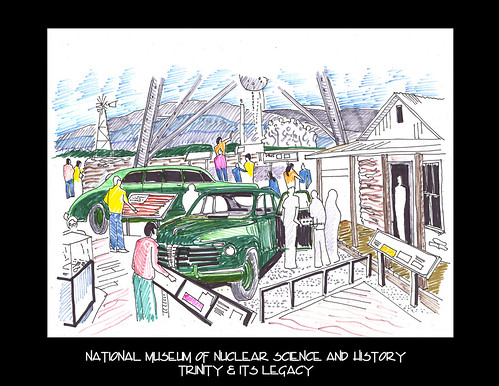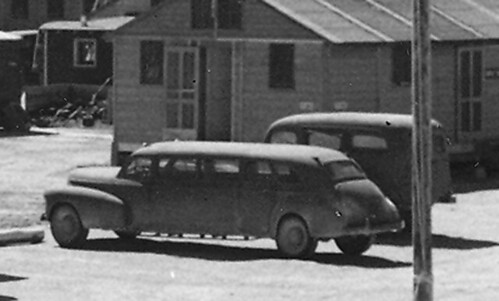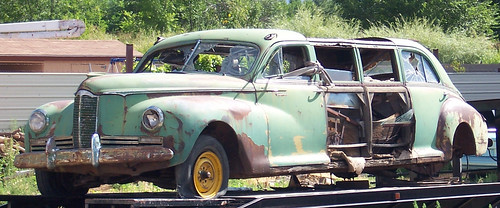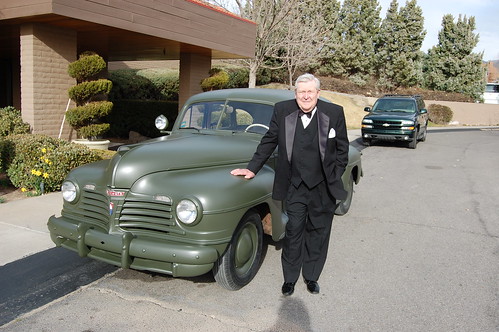
FOR IMMEDIATE RELEASE!
The National Atomic Museum will move its largest artifact, a B-52B bomber, to its new location in southeast Albuquerque on January 10 and 11, 2009. The historic plane has been stored at the Museum’s previous location on Kirtland Air Force Base.
The plane wings will be hauled in pieces by tractor-trailer two miles to the new Museum location at Eubank and Southern Blvds. SE in Albuquerque, adjacent to the Sandia Science and Technology Park and KAFB. The route will take the planes from their current location off of Wyoming Boulevard to the new site, where a new Museum is under construction.
The fuselage will be towed on its own wheelgear by two special tow bars. The plane was delivered to KAFB from the Boeing plant. The plane was always used in the special weapons program, where it was flown to the test site in Nevada; it was not part of the Strategic Air Command, unlike most B52s.
The Boeing Stratofortress B-52 has been the main long-range heavy bomber of the Strategic Air Command. Affectionately known as the BUFF (Big Ugly Fat Fella), the B-52 first flew on April 15, 1952. Nearly 750 B-52s were built when production ended in October 1963; the Museum’s plane may be one of two B-52B planes still in existence. On January 18, 1957, three B-52Bs completed the world's first non-stop round-the-world flight by jet aircraft, lasting 45 hours, 19 minutes, with only three aerial refuelings en route. A B-52 also made the first known airborne hydrogen bomb drop over Bikini Atoll on May 21, 1956.
“Moving these significant artifacts represents a huge step toward becoming the National Museum of Nuclear Science and History,” said Jim Walther, Director of the Museum. “We know the public will appreciate having these giants available for viewing. We hear repeatedly how eager people are to see these important historical aircraft.”
The plane wings will be hauled in pieces by tractor-trailer two miles to the new Museum location at Eubank and Southern Blvds. SE in Albuquerque, adjacent to the Sandia Science and Technology Park and KAFB. The route will take the planes from their current location off of Wyoming Boulevard to the new site, where a new Museum is under construction.
The fuselage will be towed on its own wheelgear by two special tow bars. The plane was delivered to KAFB from the Boeing plant. The plane was always used in the special weapons program, where it was flown to the test site in Nevada; it was not part of the Strategic Air Command, unlike most B52s.
The Boeing Stratofortress B-52 has been the main long-range heavy bomber of the Strategic Air Command. Affectionately known as the BUFF (Big Ugly Fat Fella), the B-52 first flew on April 15, 1952. Nearly 750 B-52s were built when production ended in October 1963; the Museum’s plane may be one of two B-52B planes still in existence. On January 18, 1957, three B-52Bs completed the world's first non-stop round-the-world flight by jet aircraft, lasting 45 hours, 19 minutes, with only three aerial refuelings en route. A B-52 also made the first known airborne hydrogen bomb drop over Bikini Atoll on May 21, 1956.
“Moving these significant artifacts represents a huge step toward becoming the National Museum of Nuclear Science and History,” said Jim Walther, Director of the Museum. “We know the public will appreciate having these giants available for viewing. We hear repeatedly how eager people are to see these important historical aircraft.”
Worldwide Aircraft Recovery Ltd. has provided assistance in a number of projects, including the entire Strategic Air Command Museum and its B-52, B-36, B-58, and an Atlas missile. They will move eight pieces for the Museum: four aircraft and four missiles. In addition to the B-52, the Bomarc, Mace, Matador, and Snark cruise missiles will be moved; three planes have already moved in October 2008. There are also plans to relocate a MiG-21 from Tucson, Arizona, to the new site.

